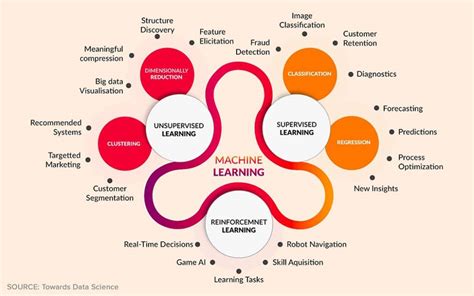How Does Machine Learning Redesign token Distribution Strategies
The World of Token Distribution has Long Been a Critical Element of Various Industries, Including Finances, Play and Social Media. Traditional strategies for the distribution of tokens riot heavy on human judgment, which can be subjective and prone to faults. However, the Appearance of Machine Learning (ML) Technologies HAS Revolutionized the way to treat Token Distribution, Providing a More Efficient, Objective and Scalable Approach.
Historical Background
In Traditional token Distribution Strategies, People Are Responsible for the Distribution of tokens Based on Perceived Value or Desires. This Often Led to Distortions, Misunderstandings and Ineffective Distribution of Resources. For example, in the early days of the cryptocurrency, the decentralized network of bitcoin is affected by debates on the distribution of the block, which can be significant financial losses.
Increasing Machine Learning
Machine Learning Technologies Have Become a Gameplay for Token Distribution Strategies. By Taking Advantage of Algorithms and Data Analysis, ML Can Analyze Large Data Sets to Identify Patterns, Trends and Relationships Underlying the Token Market Behavior. This Allows Developers to Create More Accurate, Efficient and Objective Allocation Models.
Key Applications for Machine Learning in the Token Distribution
- Predictive Modeling : ML Algorithms can be trained to predict future tokens, Allowing Proactive Risk Management and Optimization of Token Allocation.
- Optimization Algorithms : Techniques Such As Linear Programming and Dynamic Programming Allow the Tokens to Be Optimally Distributed Based on Market Dynamics and Resource Restrictions.
- Decision Support Systems : AI-Based Decision-Making Support Systems Can Analyze Huge Amounts of Data to Provide Reasonable Recommendations For The Token Distribution, Ensuring That Decisions Are Coordinated to Business Goals.
Advantages of Machine Learning in Token Distribution
- Improved Accuracy : ML Algorithms Can Identify Samples and Disorders on the Market, Allowing More Accurate Distribution Decisions.
- Scalability : Machine Learning Efficiency is significantly Higher than traditional methods, Allowing Rapid Ieration and Optimization.
- Decreased Human Error : Automated Decision -Making Reduces the Likeli Hood of Human Bias and Supervisory Errors.
- Increased Transparency : ML Algorithms Provide Transparent Explanations for Their Forecasts and Recommendations.
Real examples
- Cryptocurrency : use the decentralized financial (Defi) platform, compound, ml to optimize the token allocation and risk the risk on the lending platform.
- Gaming : Online Gambling Companies Such as Epic Games (Fortnite) and Blizzard Entertainment Use Machine Learning Algorithms to Predict Players’ Behavior and Optimize Game Development.
- Social Media

: Platforms Such as Tikts and Twitch use ML-Based Recommendation Systems to Personalize User Experiences.
Challenges and Future Directions
Althegh the Benefits of Machine Learning in the Token Distribution Are Clear, There are challenges that need to be defeated:
- Data Quality : The Quality and Quantity of Available Data Can Significantly Affect The Performance of the Algorithm.
- Interpretation : Since complex algorithms are wide spread, it is essential to ensure that decision -making processes are transparent and interpreted.
- Regulatory Frameworks
: Governments and Regulatory Bodies must adapt to the Changing Landscape of Machine Learning in the Distribution of the Token.
Conclusion
Integration of Machine Learning Into token Distribution Strategies Can Revolutionize the Distribution of Resources in Various Industries.